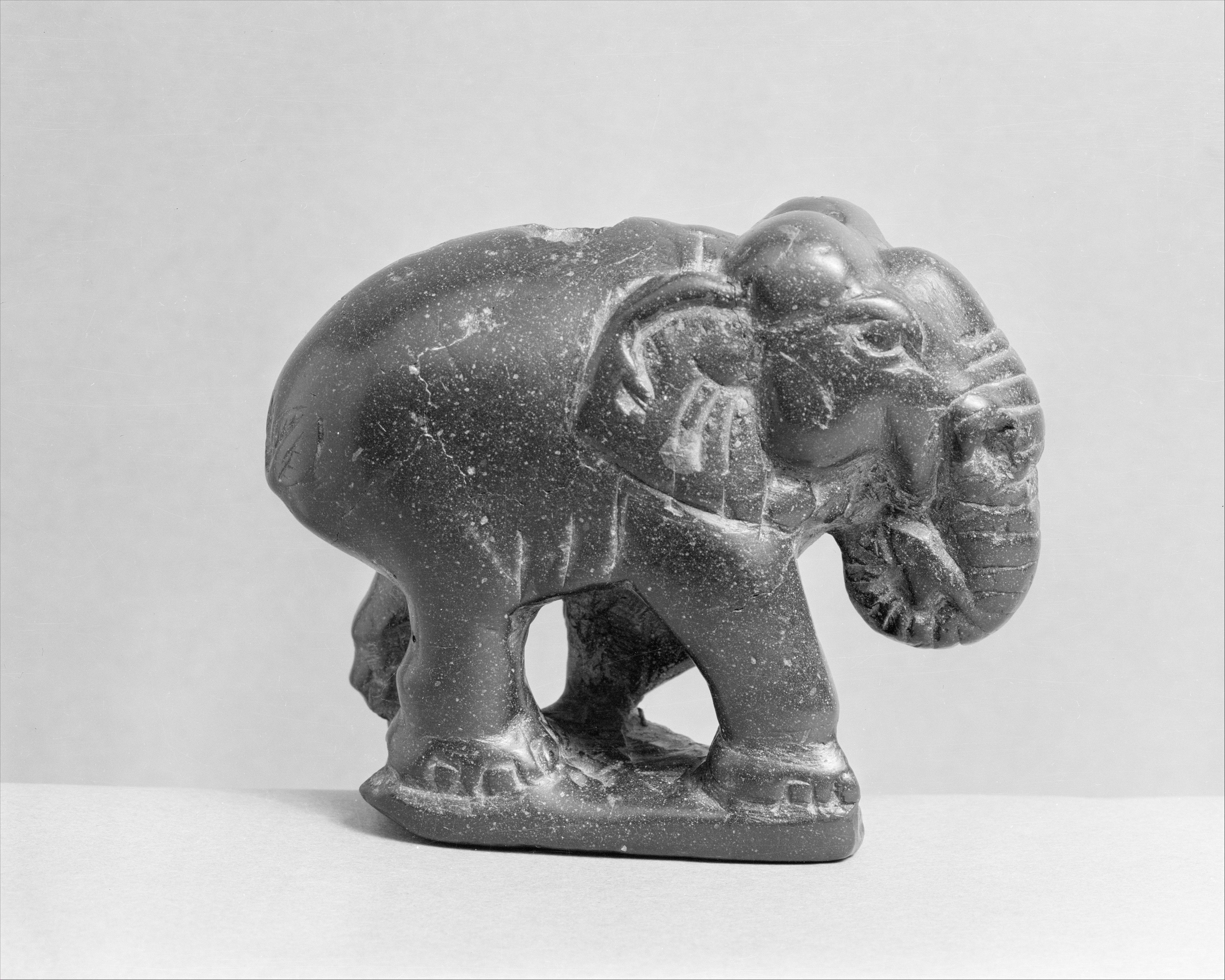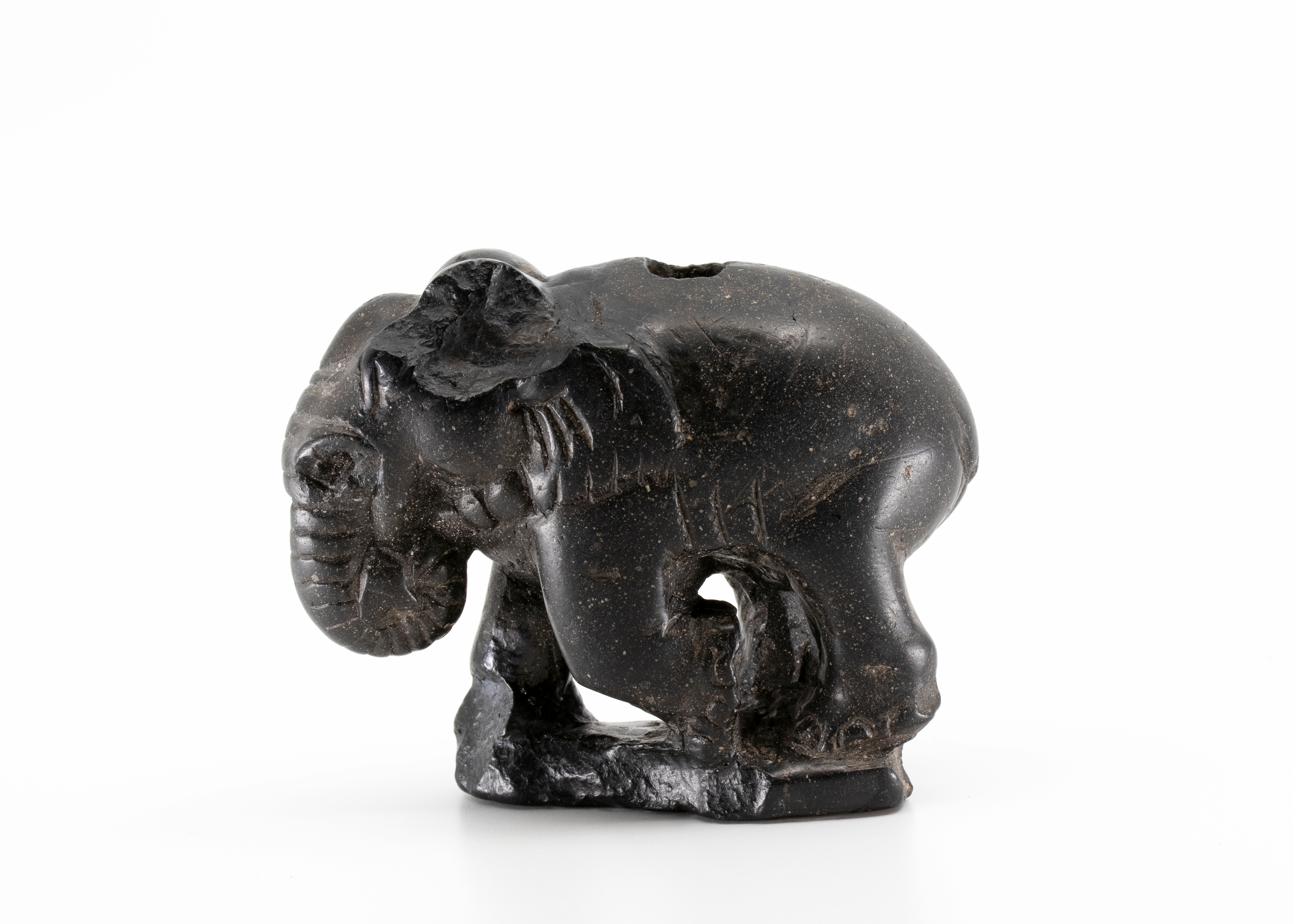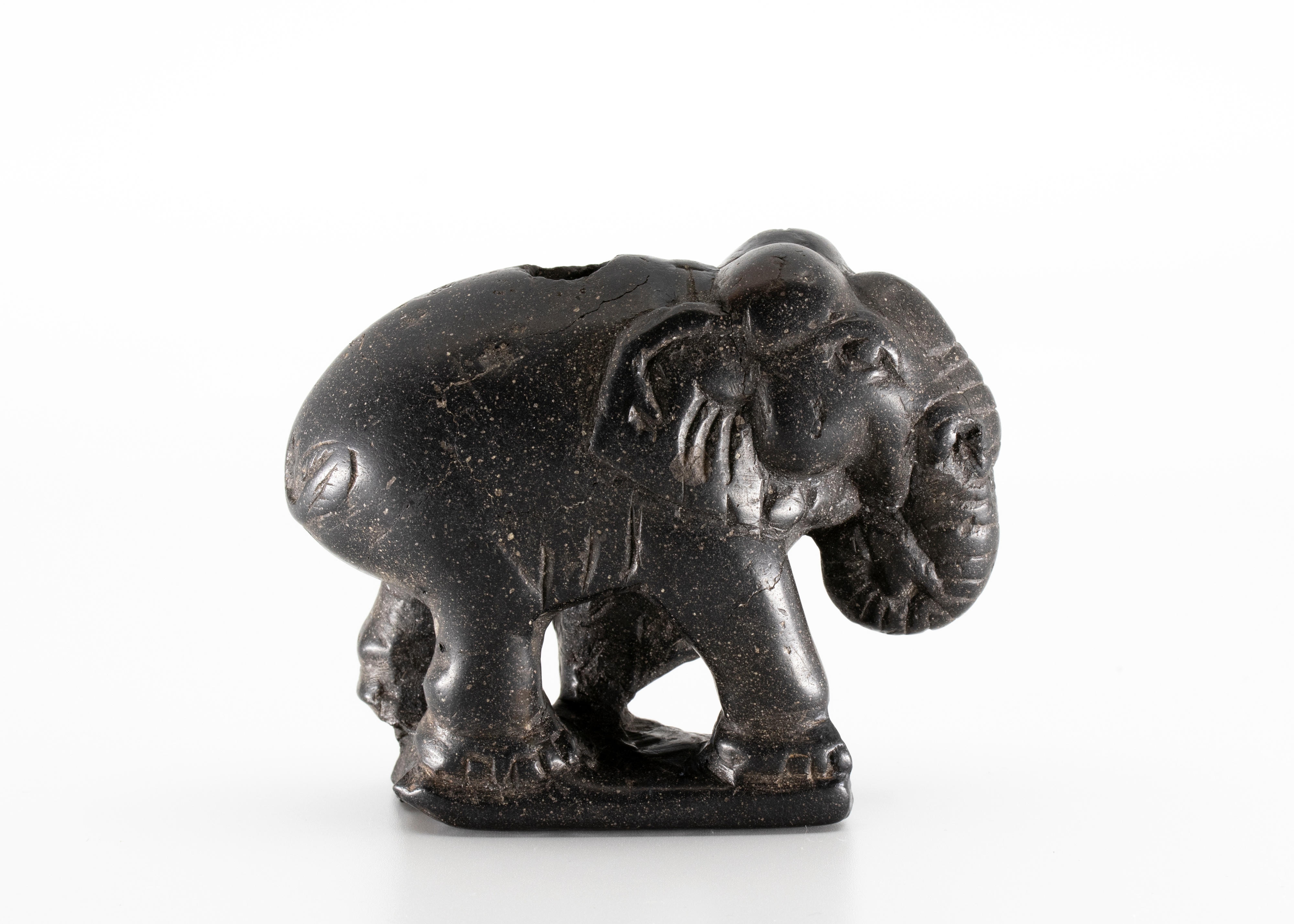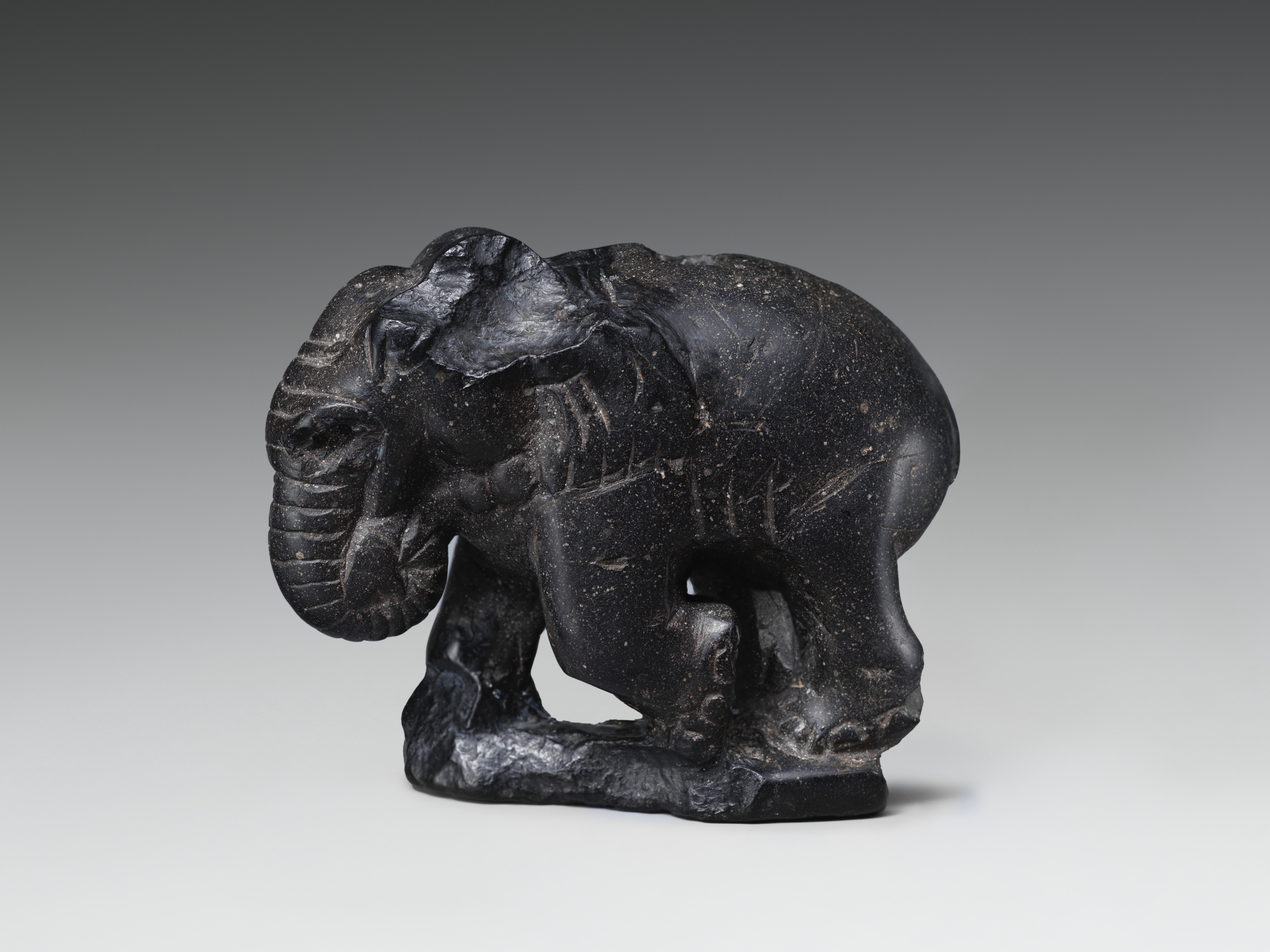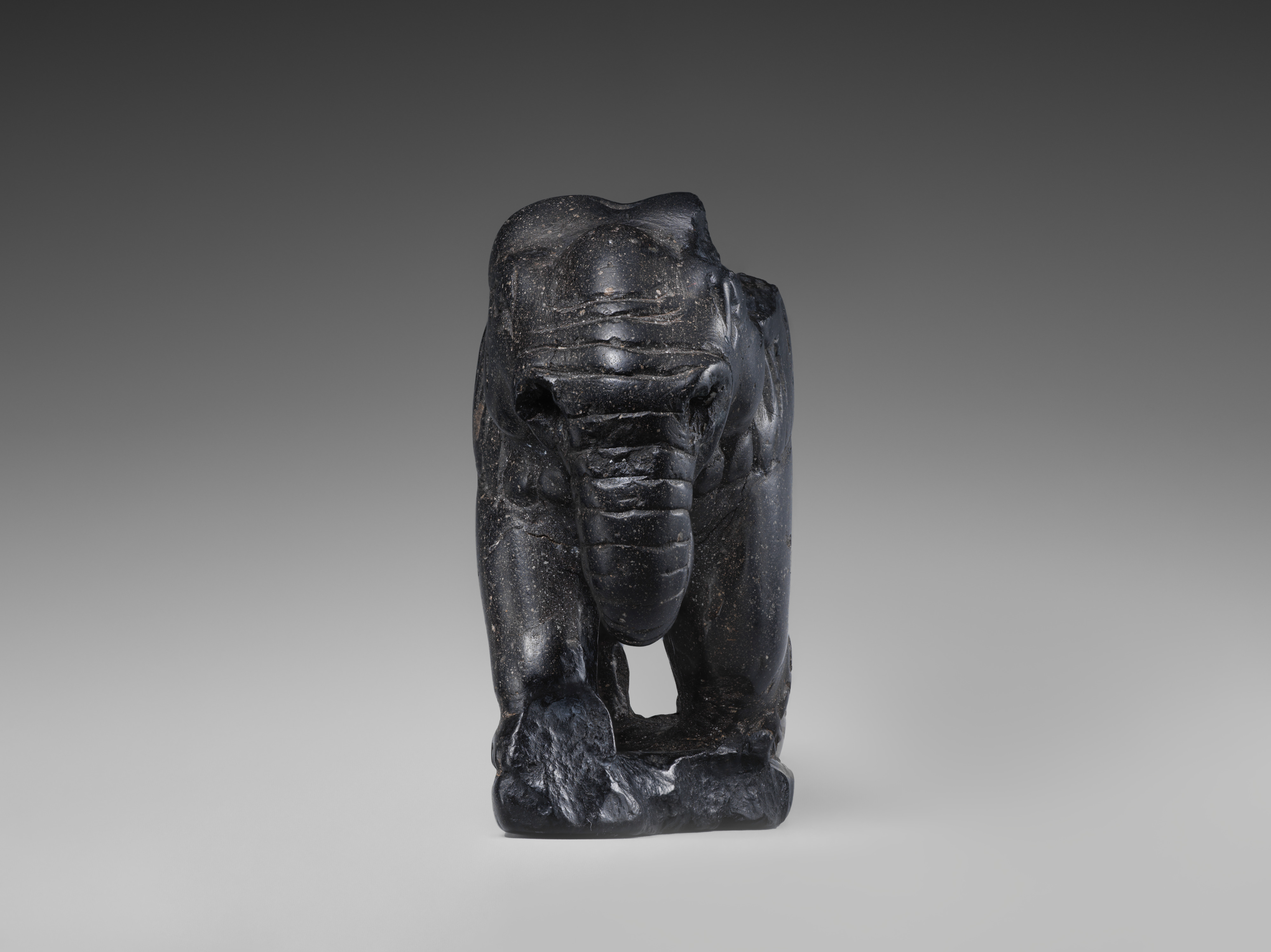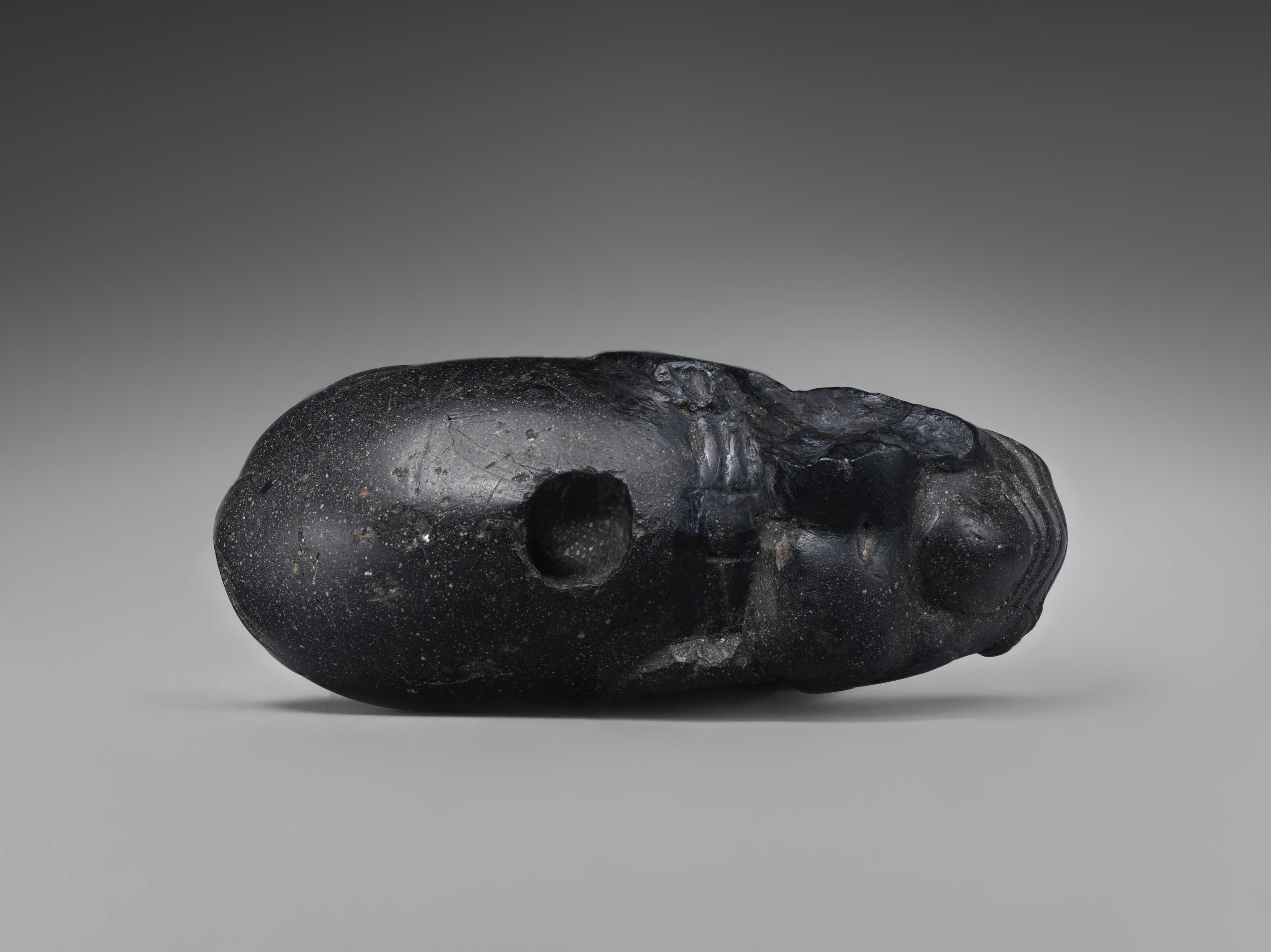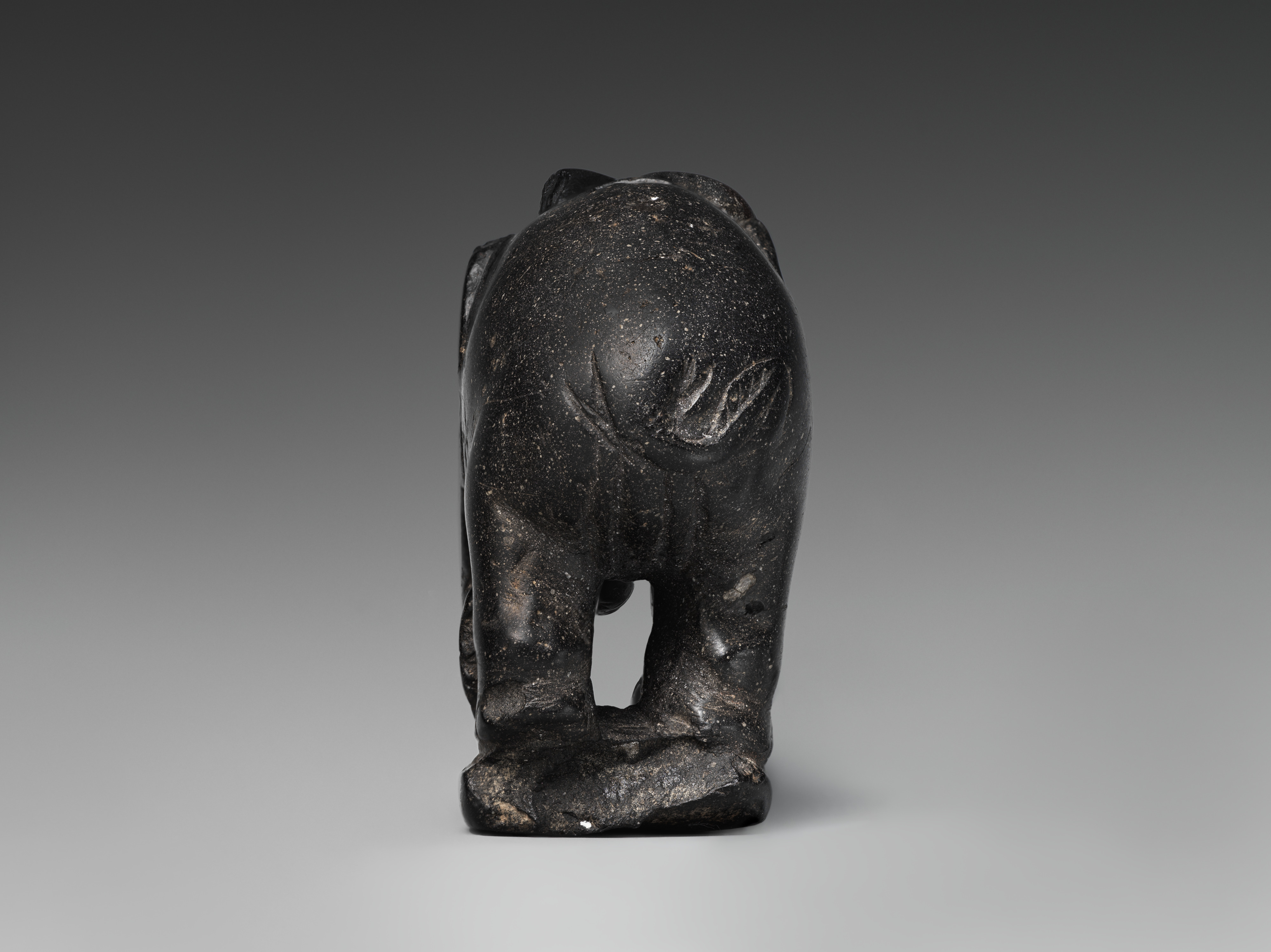Figure of an elephant, possibly a chessman
Not on view
This figure represents a striding elephant. Its rear left leg is raised slightly, and the other three alternate forward and back to create the impression of movement. All four feet are attached to a flat base. Its body is pill-shaped, and its head and ears are realistically modeled. The triangular ears suggest that this is an Asian, rather than African, elephant. Its trunk, with many incised wrinkles, is curled up in front of the mouth. The tusks are missing; presumably they were originally inlaid. The elephant wears a beaded necklace. A circular socket is cut in the elephant’s back, perhaps to hold a separate figure of a rider.
The figure probably dates to the 6th or 7th century A.D., on account of its resemblance to the elephants depicted in the massive reliefs at Taq-e Bostan near Kermanshah, Iran. The reliefs, commissioned by the Sasanian Persian king Khusrau II (reigned A.D. 591-628), show hunting scenes, in which elephants are flushing out game.
This elephant figure may in fact be an early chess piece. Chess is first mentioned in a Middle Persian text from the Sasanian Empire, which tells the story of how the king of India sent the game of chess to the king of Persia, with the challenge to figure out how it was played. A man named Wuzurg-Mihr figured out the rules to the game, and explicitly identified one of the pieces, now known as the bishop, as an elephant. Most early chess sets have abstract pieces that do not look like their namesakes, but this piece may be an exception. Indeed, the size of the elephant suggests that it would have been part of an unusually large chess set.
Due to rights restrictions, this image cannot be enlarged, viewed at full screen, or downloaded.
This artwork is meant to be viewed from right to left. Scroll left to view more.


